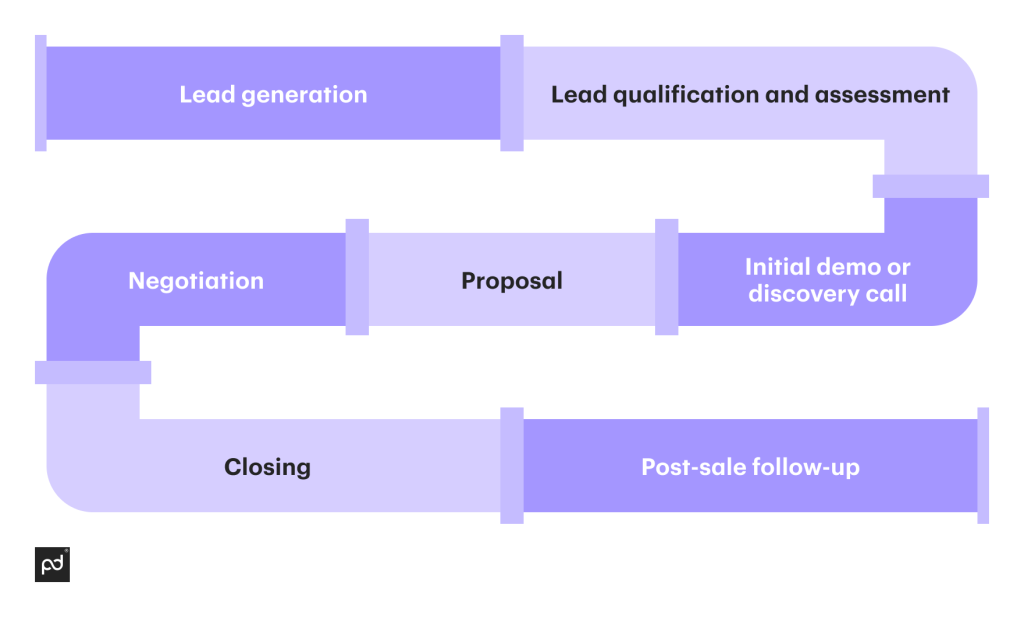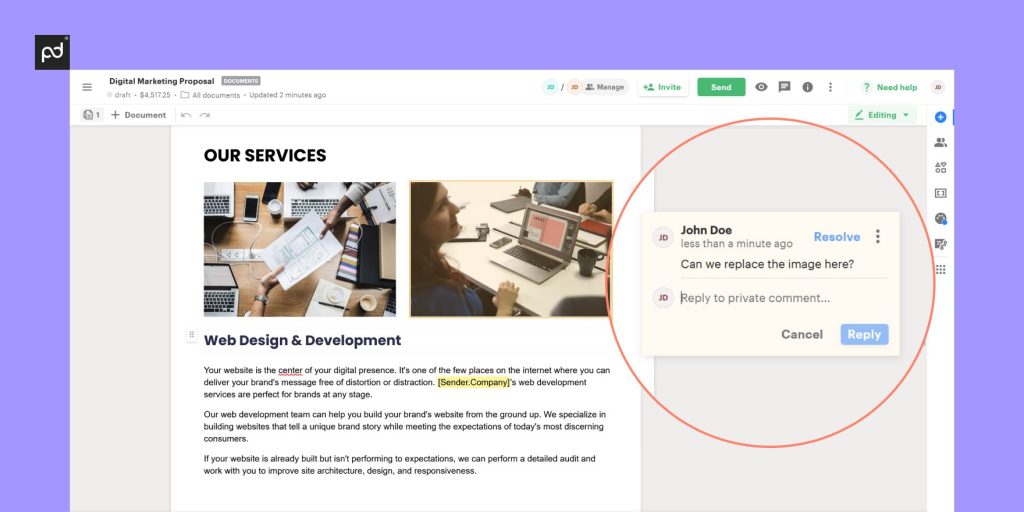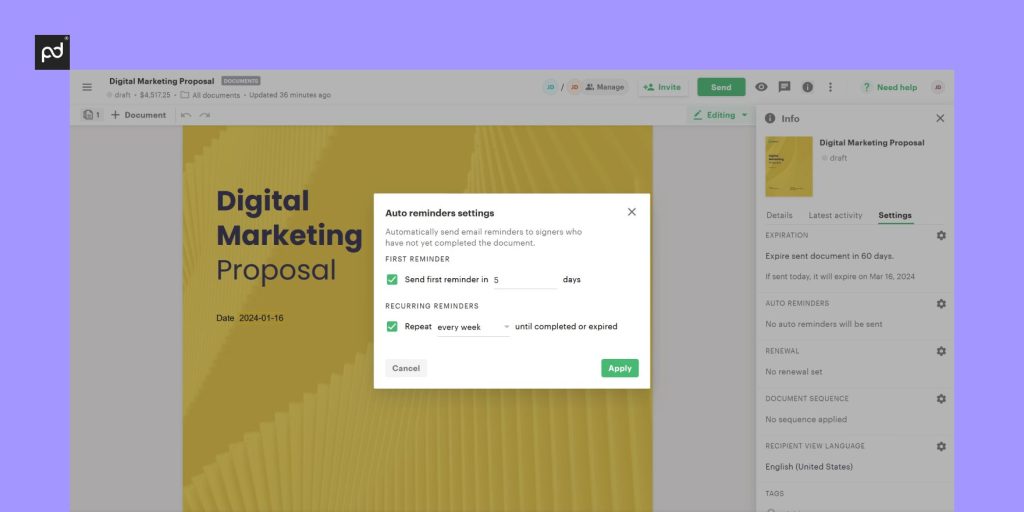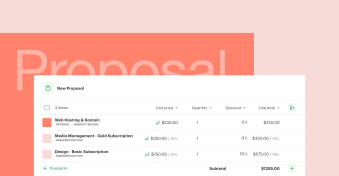Imagine you’re playing a video game where your goal is to guide a character through different levels until they reach the final stage.
In the world of sales, salespeople are engaging with potential clients to guide them from the top of the sales pipeline, when they first discover a product or a service (level 1) to the bottom of it, the post-purchase stage (the final level).
To do that efficiently, the right processes paired with a robust sales tech stack featuring a CRM and sales enablement software is key.
Key takeaways
- A sales pipeline is a structured approach that helps you manage your sales process better, engage with leads more efficiently, and boost your revenue.
- To build a robust sales pipeline, you need to define the stages of your sales process and equip your team members with the right tools for each type of sales activity, such as qualifying leads, creating proposals, and signing deals.
- Customer relationship management (CRM) software is a key component of successful sales pipeline management, because it enables you to move leads through the different stages of the sales process in a semi-automated way and make your sales team more effective.
What is a sales pipeline?
A sales pipeline is a roadmap that shows the customer journey from the moment they first hear about your product or service until after they buy it, similar to — but not exactly the same as — a sales funnel.
Often, a visual representation is used to illustrate the concept and its different stages, from lead generation to post-sale follow-up:

In most instances, the sales team uses CRM software to track the customer’s progress through the sales pipeline. They then use information gathered to:
- Identify and remove roadblocks to the sales process
- Design better sales strategies
- Help customers move through the stages more smoothly
- Close more sales
The stages of a sales pipeline
Here’s what each step of the sales pipeline entails:
1. Lead generation
In the first step of the sales process, the focus is on identifying potential customers in line with your ideal customer profile.
Here, your sales team needs to gather a list of prospects that are potentially interested in what you’re selling.
Thankfully, cold calling (which many salespeople dread) is no longer a must for generating leads.
Instead, your marketing team might engage in outreach campaigns on social media, set up ads, create webinars, or use organic traffic.
2. Lead qualification and assessment
Once your sales team has a list of new leads, the next step is to figure out which of these are likely to buy.
This involves assessing their needs, budget, and decision-making power to accurately evaluate the likelihood of a purchase.
3. Initial demo or discovery call
Next, sales reps engage qualified leads and connect with them, often via a video call, to discuss their needs and pain points and show how your product or service can help them achieve their goals.
Lead nurturing might be as simple as a single demo that leads to a proposal request or might be a multi-step process.
4. Proposal
Next comes the fun part: crafting a proposal.
Even if pricing information is publicly available on your website, your salespeople will still need to create a proposal that’s tailored to your leads’ needs.
Proposal software like PandaDoc helps you streamline the entire process — and proposal templates can be extremely handy if you want to send yours in record time and impress prospective customers with on-brand design.
5. Negotiation
The next stage of the sales cycle is negotiating contracts with decision-makers.
Again, the best way to do this is if you automate some parts of the sales process and enable leads to add their comments to your proposals — and empower your sales reps to make changes in real time, as needed.
Proposal software is the most straightforward way to do this.

6. Closing
Once all parties agree to the terms of the contract, signing the deal should be the self-evident next step.
eSignatures help streamline the closing process, as they enable clients to sign contracts from any device quickly and securely, removing friction from this key part of the customer journey.
7. Post-sale follow-up
The last stage of the pipeline involves post-sales support and following up with newly signed clients to make sure they’re able to start using your solution straight away and aren’t experiencing any technical or other difficulties.
How to build an efficient sales pipeline: best practices for success
Now that you know what the different stages of the sales pipeline involve, let’s look at the best practices that will set you up for success.
1. Define your sales process
The exact stages of your sales process and your sales cycle length will depend on your business. Typically, B2B companies have complex, multi-stage sales processes. Define each step of the buyer’s journey and how your sales team guides leads through them.
2. Choose the right CRM software and input sales data
The right customer relationship management (CRM) software will be instrumental to your success, because it’ll help you gather all contact information in a single location, proactively manage relationships with customers and leads, and provide better and more personalized service.
To pick the right one, you need to look into:
- Your specific needs and the functionalities that would cater to those needs
- The solution’s flexibility and customization capabilities
- The range of possible CRM integrations with other software tools
- Its scalability, ensuring it can grow with your business
- Costs and different pricing models
Once you select the right CRM, you need to input your existing sales data into it; most tools will enable you to upload a CSV table with it, barring the need for manual data entry.
3. Train your team on how to use your CRM
Proper training ensures that your team can make full use of your CRM’s features and capabilities to manage your sales pipeline.
CRM providers usually offer some sort of comprehensive onboarding for teams, often in the form of pre-recorded videos, along with detailed user guides.
Ensure that the team understands how to input data, track customer interactions, and use the CRM to track key sales pipeline metrics.
4. Set up alerts and reminders
Following up with leads and existing customers is one of the cornerstones of a successful sales pipeline management process. This helps you:
- Sign up new customers — sometimes a few follow-ups are all that is needed to close a deal
- Upsell and cross-sell products and services to existing customers, because you know exactly what they need at a given moment

5. Monitor key metrics and analyze results
Monitoring key metrics helps you measure and track the health of your sales pipeline and the effectiveness of your sales strategies.
It also provides key insights into areas that need improvement, helps you define future sales goals, and set up sales forecasts.
Identify key performance indicators (KPIs) such as lead conversion rates, average deal size, win rates, sales cycle length, and customer acquisition cost.
Use the CRM’s reporting and analytics tools to track these metrics and analyze trends over time.
Use the right tools to close deals faster
Working alongside your CRM, you also need the right contract management, invoicing, and payment tools to streamline your workflow, get deals signed, and collect payments.
PandaDoc is an end-to-end solution that integrates seamlessly with your CRM and offers all those functionalities — and more.
(There are other tools on the market that will help cover each point, but you’d need to get a specific software for each use case and make sure it plays well with the rest of your tech stack.)
Sign up for a 14-day trial to see for yourself what an efficient sales pipeline can look like with the right tools — or schedule a free demo with one of our experts.


